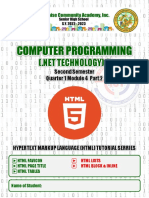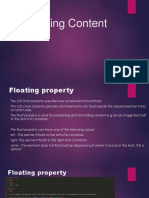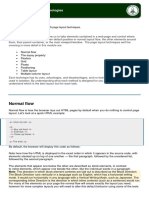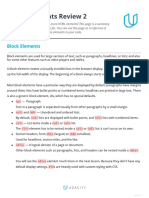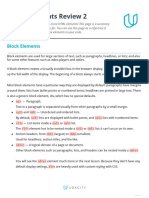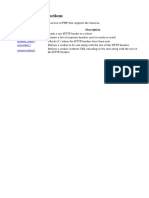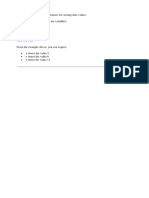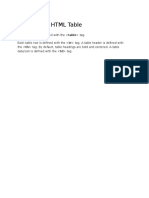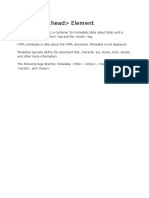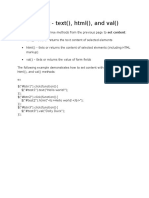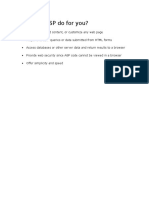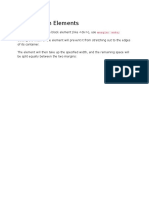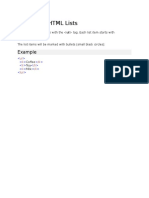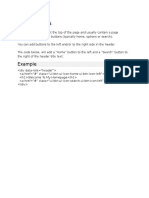0% found this document useful (0 votes)
21 views1 pageCss Display
The display property specifies how HTML elements are displayed, with most elements defaulting to block or inline. Block elements start on a new line and stretch the full width, while inline elements sit within surrounding content. Common block elements include <div>, <h1>-<h6>, <p>, <form>, <header>, <footer>, and <section>.
Uploaded by
Alex MociranCopyright
© © All Rights Reserved
We take content rights seriously. If you suspect this is your content, claim it here.
Available Formats
Download as DOCX, PDF, TXT or read online on Scribd
0% found this document useful (0 votes)
21 views1 pageCss Display
The display property specifies how HTML elements are displayed, with most elements defaulting to block or inline. Block elements start on a new line and stretch the full width, while inline elements sit within surrounding content. Common block elements include <div>, <h1>-<h6>, <p>, <form>, <header>, <footer>, and <section>.
Uploaded by
Alex MociranCopyright
© © All Rights Reserved
We take content rights seriously. If you suspect this is your content, claim it here.
Available Formats
Download as DOCX, PDF, TXT or read online on Scribd
/ 1







